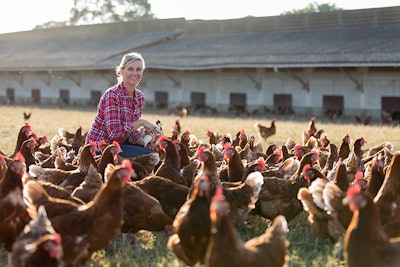
Nutritional needs vary by region based on resources and income, and initiatives geared toward sustainability still have to accommodate those needs, according to panelists.
Under the theme “Coming together to feed a fragile world,” the Farm Journal Foundation held a panel of industry experts to educate how poultry producers, big and small, can fight climate change while still meeting population needs.
The poultry industry meets nutritional and economic needs
Poultry production not only meets the nutritional needs of a growing population, but it also provides income for a large percentage of people. According to Dr. Shirley Tarawali, assistant director general of the International Livestock Research Institute, approximately one in six people in the world have a livelihood that relies on animal sourced food.
With the global population continuously growing, regional poultry industries will need to meet the demand by increasing production and efficiency, but producers will need to keep in mind the environmental and human harms that increasing production can cause.
Promoting animal health increases efficiency
“Healthier animals are more efficient,” said Dr. Mike McFarland, chief medical officer for Zoetis, during the “Innovating Towards a Virtuous Cycle” panel. They are more efficient financially but also environmentally.
McFarland highlighted a few ways to make poultry health a priority: increasing vaccinations, improving the birds’ genetic foundation, integrating protein into diets and stimulating the immune system. This can help reduce antibiotic use as well, as concerns grow regarding potential antibiotic resistance.
And sometimes the most efficient production method could also very likely be the most environmentally sustainable, said Ken Nobis, Farmer Ambassador for the Farm Journal Foundation. According to Tarawali, who is also chair of the Global Agenda for Sustainable Livestock, a farm that achieves efficiency, productivity and a decreased carbon footprint is a “triple win.”
McFarland, who is part of Zoetis’ A.L.P.H.A Initiative, acknowledged that getting new methods and technology to farmers in low- and middle-income countries is its own challenge.
Integrated farming builds a sustainable cycle
Integrated farming is when byproducts are used to grow other products on a farm. For example, a farm with animals and crops can use the manure to fertilize the crops.
According to the panelists, many farms in low- and middle-income countries are already doing this. In Africa, approximately 70% of animal products come from local integrated farms, said Tarawali, and 50% of cereals.
When a region physically separates industries, like having separate livestock and grain producers, Tarawali refers to this as “transformation without the integration.”
However, what works for one country, whether it be technology or sustainability or something else, might not work for others. It is important to adapt to the nutritional needs and resource limitations when introducing any new system to a region.















